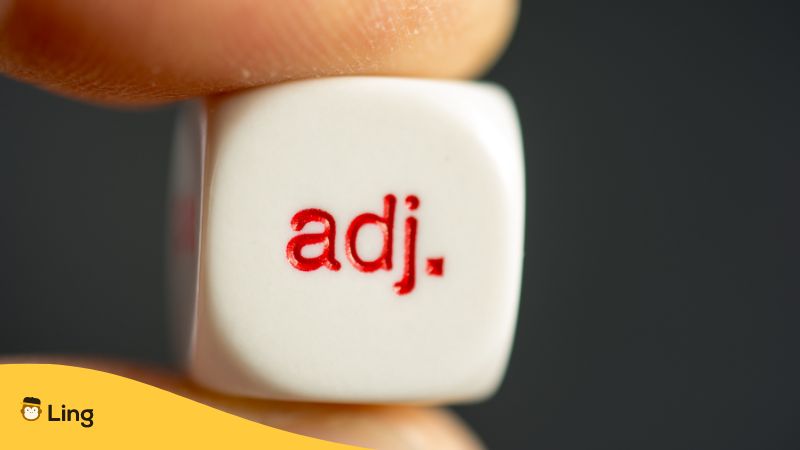Have you ever wanted to give details about something and kept searching in your mind for the right words but couldn’t find one? These are called tip-of-the-tongue-states. About 99% of the time, you are looking for an adjective, which refers to words that modify, define, describe, and detail a noun. We have a bunch of Punjabi adjectives to help make your search much more straightforward.
Adjectives come before or after nouns and pronouns, which is why they are classified mainly into two parts: the attributive and the predicative. Attributive comes before nouns, and predicative goes after them. There are many adjectives too, and we will mention just four here: possessive, interrogative, demonstrative, and compound. Now, hang on! What are the types of adjectives in the Punjabi language? We will look at a special list to help you master precisely that!

What Are Punjabi Adjectives?
Adjectives in Punjabi are called Visesana (ਵਿਸ਼ੇਸ਼ਣ) and are used in everyday conversations. Let’s look at an example:
Tom and Bob eat at the (adjective) old (noun) restaurant. Here we can see the adjective before the noun.
The (noun) flower is (adjective) beautiful. The noun comes first, and the adjective comes later in the sentence.
In this Punjabi sentence, we see how the adjective helps paint a clear picture of the nouns. You can give great details about what you are talking about with the help of adjectives. In terms of structure, the Punjabi language follows a sentence’s SOV or Subject Object Verb structure.
Here’s one example: He will run in a race.
Punjabi: ਉਹ (subject) ਦੌੜ (object) ਵਿੱਚ (preposition) ਦੌੜੇਗਾ (verb)।
Transliteration: Uha (subject) dauṛa (object) vica (preposition) dauṛēgā (verb).
Did you see the Punjabi sentence structure? It is like this “He race will run in,” which can sound quite funny in English but makes perfect sense in Punjabi.
Now let’s place adjectives in sentences:
Example: I live near the old red (adjectives) house (noun).
Punjabi: ਮੈਂ ਪੁਰਾਣੇ ਲਾਲ (adjectives) ਘਰ (noun) ਦੇ ਕੋਲ ਰਹਿੰਦਾ ਹਾਂ।
Transliteration: Maiṁ purāṇē lāla ghara dē kōla rahidā hāṁ.
The adjectives in Punjabi also fall in front of nouns, and it makes it much more accessible to start forming sentences or phrases with details.
A List Of Punjabi Adjectives
It’s time to try some Punjabi adjectives and then some phrases or sentences as examples. Spending about 10 – 15 minutes practicing these will be worth your time. Research tells us that with just 3 hours, you can learn up to 1000 Punjabi words – good enough to carry out a simple conversation, right? Here are the words that can help you out!
| English | Punjabi | Transliteration |
|---|---|---|
| Colors | ਰੰਗ | Raga |
| Red | ਲਾਲ | Lala |
| Yellow | ਪੀਲਾ | Pila |
| Green | ਹਰਾ | Hara |
| Blue | ਨੀਲਾ | Nila |
| Sizes | ਆਕਾਰ | Akara |
| Big | ਵੱਡਾ | Vada |
| Small | ਛੋਟਾ | Chota |
| Long | ਲੰਬੇ | Labe |
| Short | ਛੋਟਾ | Chota |
| Tastes | ਸੁਆਦ | Suada |
| Spicy | ਮਸਾਲੇਦਾਰ | Masaledara |
| Sweet | ਮਿੱਠਾ | Mitha |
| Sour | ਖੱਟਾ | Khata |
| Bitter | ਕੌੜਾ | Kaura |
| Noisy | ਰੌਲਾ | Raula |
| Expensive | ਮਹਿੰਗਾ | Mahiga |
| Cheap | ਸਸਤੇ | Sasate |
| Slow | ਹੌਲੀ | Hauli |
| Fast | ਤੇਜ਼ | Teza |
| Old | ਪੁਰਾਣਾ | Purana |
| New | ਨਵਾਂ | Navam |
| Young | ਨੌਜਵਾਨ | Naujavana |
| Rough | ਰੁੱਖੀ | Rukhi |
| Smooth | ਨਿਰਵਿਘਨ | Niravighana |
Punjabi Adjectives In Sentences
Some examples of Punjabi adjectives that can be used as everyday words and phrases used in sentences are below:
| English | Punjabi | Transliteration |
|---|---|---|
| The new temple looks beautiful. | ਨਵਾਂ ਮੰਦਰ ਬਹੁਤ ਸੋਹਣਾ ਲੱਗਦਾ ਹੈ। | Navāṁ madara bahuta sōhaṇā lagadā hai. |
| I enjoyed the spicy food. | ਮੈਂ ਮਸਾਲੇਦਾਰ ਭੋਜਨ ਦਾ ਆਨੰਦ ਮਾਣਿਆ। | Maiṁ masālēdāra bhōjana dā ānada māṇi’ā. |
| We made it to the party despite slow traffic. | ਧੀਮੀ ਆਵਾਜਾਈ ਦੇ ਬਾਵਜੂਦ ਅਸੀਂ ਪਾਰਟੀ ਵਿੱਚ ਸ਼ਾਮਲ ਹੋਏ। | Dhīmī āvājā’ī dē bāvajūda asīṁ pāraṭī vica śāmala hō’ē. |
| The expensive bracelet was stolen last week. | ਮਹਿੰਗਾ ਬਰੇਸਲੇਟ ਪਿਛਲੇ ਹਫ਼ਤੇ ਚੋਰੀ ਹੋ ਗਿਆ ਸੀ। | Mahigā barēsalēṭa pichalē hafatē cōrī hō gi’ā sī. |
| His long beard is turning gray. | ਉਸਦੀ ਲੰਬੀ ਦਾੜ੍ਹੀ ਸਲੇਟੀ ਹੋ ਰਹੀ ਹੈ। | Usadī labī dāṛhī salēṭī hō rahī hai. |
| I need a fast route to the airport. | ਮੈਨੂੰ ਹਵਾਈ ਅੱਡੇ ਲਈ ਇੱਕ ਤੇਜ਼ ਰਸਤਾ ਚਾਹੀਦਾ ਹੈ। | Mainū havā’ī aḍē la’ī ika tēza rasatā cāhīdā hai. |
Why Learn Punjabi?
Punjabi, also known as Panjabi, is a vibrant language spoken by millions worldwide. Learning it can allow you to communicate with a wider range of people and give you a deeper understanding and appreciation of Punjabi culture.
Given that Punjabi might be hard to learn for some people, learning it has been shown to have numerous cognitive benefits. It can improve memory and problem-solving skills, as well as increase creativity and flexibility of the mind. So not only will learning Punjabi allows you to connect with others and expand your cultural horizons, but it can also positively impact your overall cognitive development.
The best place to start learning? Master the basics of Punjabi adjectives!

Learn Punjabi With Ling
Consider this article a mini-Punjabi lesson, but as we all know it, the Punjabi language is much more than just phrases, words, pronunciation, and examples. Learning Punjabi requires a deeper dive into the language, culture, and Punjab. And if you want to know just that, then there’s nothing more that I can recommend than trying out the Ling app!
Ling is a language-learning platform with lessons and mini-exercises to support you as you master Punjabi and 60+ other languages. From essential words to complex sentences, this platform has everything you’ll ever need to become proficient. The best part of it all? You don’t have to commit to it for hours! In fact, you can just use it for 15 minutes or less and learn something new!
So what are you waiting for? Download it today from Play Store or App Store!
Updated by Punya



































































